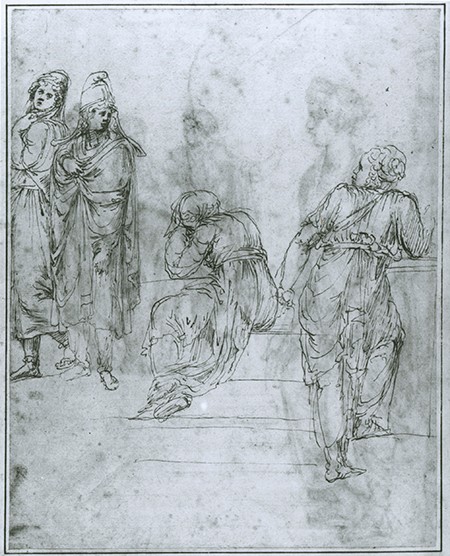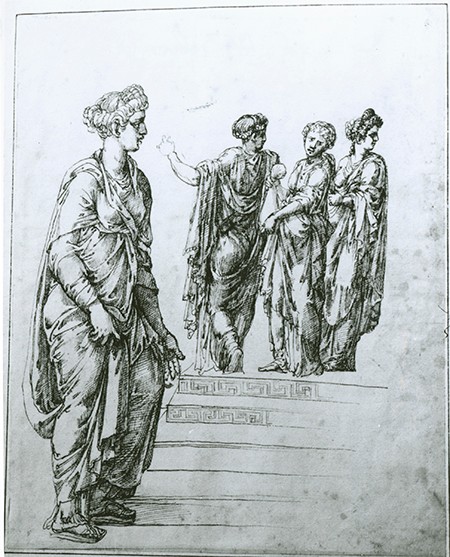The initial step in preparing the publication of the first catalogue raisonné of the drawings of Pirro Ligorio (1512–1583) was to review thoroughly the collection of three hundred drawings published by David Coffin in his posthumous monograph of 2004 (Pirro Ligorio: The Renaissance Artist, Architect, and Antiquarian). That undertaking was made possible by an earlier fellowship at CASVA in the summer of 2015. At that time, I showed that the drawings were attributed to the artist on the basis of John Gere’s 1971 article on Ligorio’s early drawings. I also demonstrated the limitations of Gere’s thesis on Polidoro da Caravaggio’s influence on Ligorio’s first period of activity (1534–1550), finding that one of the key works he attributed to Ligorio, Diana and Apollo Killing the Children of Niobe (National Gallery of Art), should in fact be excluded from Ligorio’s oeuvre.
During my second residency at CASVA, I concluded that the only way to define Ligorio’s style was to begin by studying the drawings that are dated with certainty; I thus determined that, even if Ligorio’s style evolved over time, the fundamental characteristics of his early style are still present in the drawings of his maturity. I was able to show the evolution of Ligorio’s manner during the three essential moments of his life: the first Roman period (1534–1554), linked with his activity as a painter of facades after Polidoro and also marked by his only extant painting, The Dance of Salome, preserved in San Giovanni Decollato; the second Roman period (1555–1567), when he served as papal architect in Saint Peter’s and produced designs for the Casino of Pius IV and for the villa and gardens in Tivoli; and the Ferrarese period (1568–1583), when he was an antiquarian at the court of Duke Alfonso d’Este and his work included important iconographic programs for the Este Castello and the Palazzo Ducale in Mantua.

